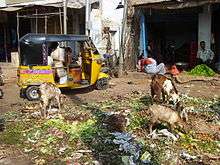Green waste
Green waste, also called agricultural waste, is biodegradable waste that can be composed of compostable wastes, such as grass and flower cuttings, hedge trimmings, fallen leaves, dead plant matter, as well as domestic and commercial food wastes [1]. The differentiation green waste identifies it as waste that is high in nitrogen, opposed to brown waste, which is primarily composed of carbon compounds.
Collection of Green waste
Green waste can be collected via municipal curbside collection schemes or through private waste management businesses. Many communities, especially in the United Kingdom, have initiated green waste recycling and collection programs in order to decrease the amount of biodegradable materials in landfills[1] . Communities are provided with, or can provide their own, compost receptacles that they fill with plant and food remains, which are then emptied on a regular basis. Programs such as this allow communities to be an active part of composting their green waste which allows them to play an active role in decreasing the amount of food being dumped into local and regional landfills[1].

Uses

Biogas captured from biodegradable green waste can be used as biofuel. Green waste can be used as non-food crop to produce cellulosic ethanol. It can also help us reduce the usage of petroleum gases which produce harmful gases on burning
See also
References
- 1 2 3 Williams, I.D.; Kelly, J. (2003). "Green waste collection and the public's recycling behaviour in the Borough of Wyre, England". Resources, Conservation and Recycling. 38 (2): 139–159. doi:10.1016/s0921-3449(02)00106-4. ISSN 0921-3449.
